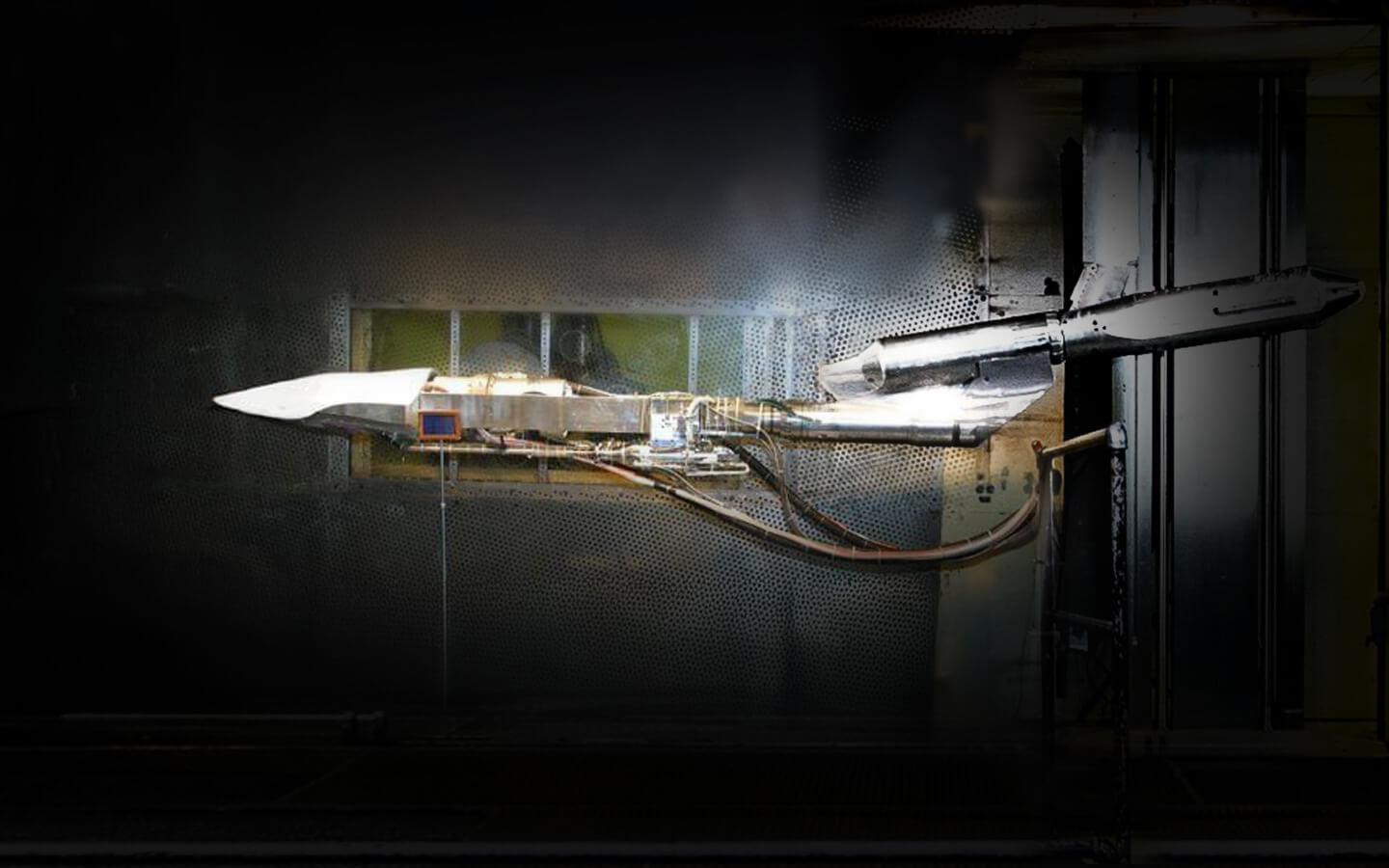Inlet Optimization

Calspan Provides Unique Solutions to Achieve Your Inlet Testing Goals
- Calspan’s Fore Body Inlet Optimization provides data for total pressure recovery, distortion, stability characteristics, and primary/ECS/bleed air simulation.
- Ejector augmentation/mass flow plug system used to control mass flow(s).
- Up to 15 lb/sec can be provided at proportionally lower supply pressures.
- Secondary low-volume air control option (0.02 to 0.1 lb/sec) for secondary or tertiary flow. Additional 1 lb/sec and 4 lb/sec systems are also available.
- We capture up to 768 static pressures and 120 unsteady pressures (AIP Rake(s), inlet surface, etc.).

Advanced Mass Flow Simulation
Ejector augmentation and an adjustable mass flow plug allow precise control of primary flow, simulating real engine ingestion across test conditions.

High-Volume and Secondary Air Supply
Up to 15 lb/sec of airflow is available for primary mass flow ejector augmentation, with secondary low-volume air options (0.02–0.1 lb/sec) for bleed, ECS, or tertiary flow simulation. Additional 1 lb/sec and 4 lb/sec systems are also available.

High-Density Pressure Instrumentation
We capture up to 768 static pressures and 120 unsteady pressures on inlet surfaces and at the AIP—supporting detailed recovery and distortion analysis.

Optimizing Inlet Performance Through Advanced Test Capabilities
Calspan’s Inlet Optimization testing delivers high-fidelity data to evaluate total pressure recovery, distortion patterns, spillage, and inlet stability across a wide range of flight conditions. Using a mass-flow plug system, high-pressure air supply, and secondary flow control, Calspan simulates engine face conditions with exceptional accuracy. Our variable-flow capabilities—including up to 15 lb/sec of primary air and low-volume secondary flows—enable customers to replicate real engine ingestion requirements. With high-density instrumentation and rapid adjustments to mass flow, Calspan provides the data required to validate inlet design performance and ensure compatibility with downstream propulsion systems.
Inlet Optimization Testing
Calspan’s Inlet Optimization testing enables customers to evaluate inlet aerodynamics through multiple flight conditions, including pressure recovery, distortion, stability, and spillage characteristics. Models can be of the whole vehicle, just the forebody, or an isolated inlet and can be instrumented with static pressure taps along the inlet, static and total pressure taps at the engine face, and temperature probes at key locations. This instrumentation enables detailed mapping of inlet efficiency and compatibility with engine requirements.
Mass Flow and Engine Face Simulation
To simulate engine mass flow, Calspan uses an ejector system paired with mass-flow control and an adjustable mass-flow plug. High-pressure air is delivered downstream of the engine face to replicate operational flow rates, while the plug position is adjusted for fine control. This system allows accurate replication of engine demand, providing realistic conditions for assessing distortion, pressure recovery, and inlet stability.
High-Resolution Pressure Capture
To fully characterize inlet performance, Calspan can record up to 768 static pressure points and 120 unsteady pressure measurements through AIP rake systems, inlet surface arrays, and localized measurement stations. This high-resolution data supports recovery calculations, steady and unsteady distortion mapping, CFD validation, and structural or acoustic analyses.